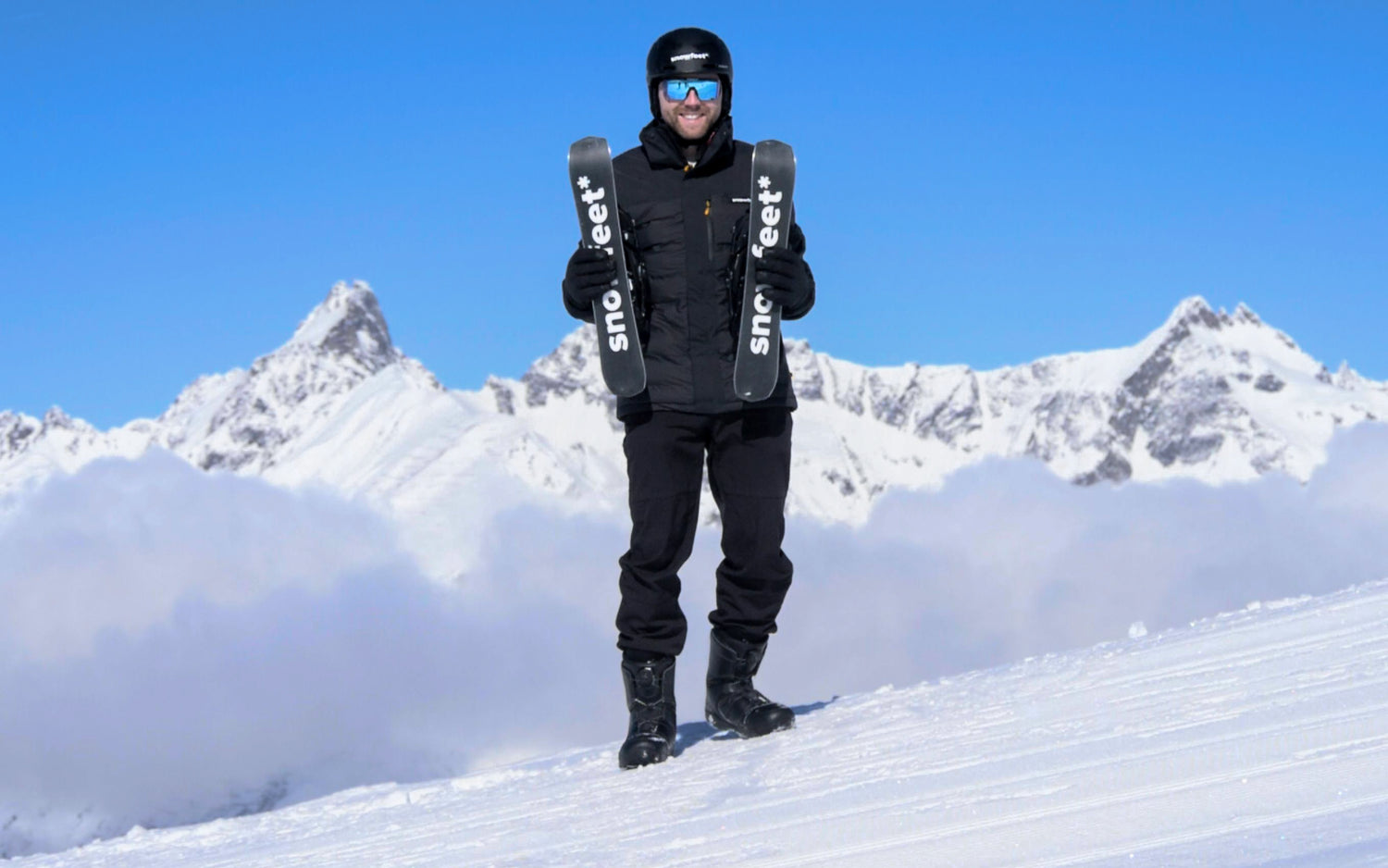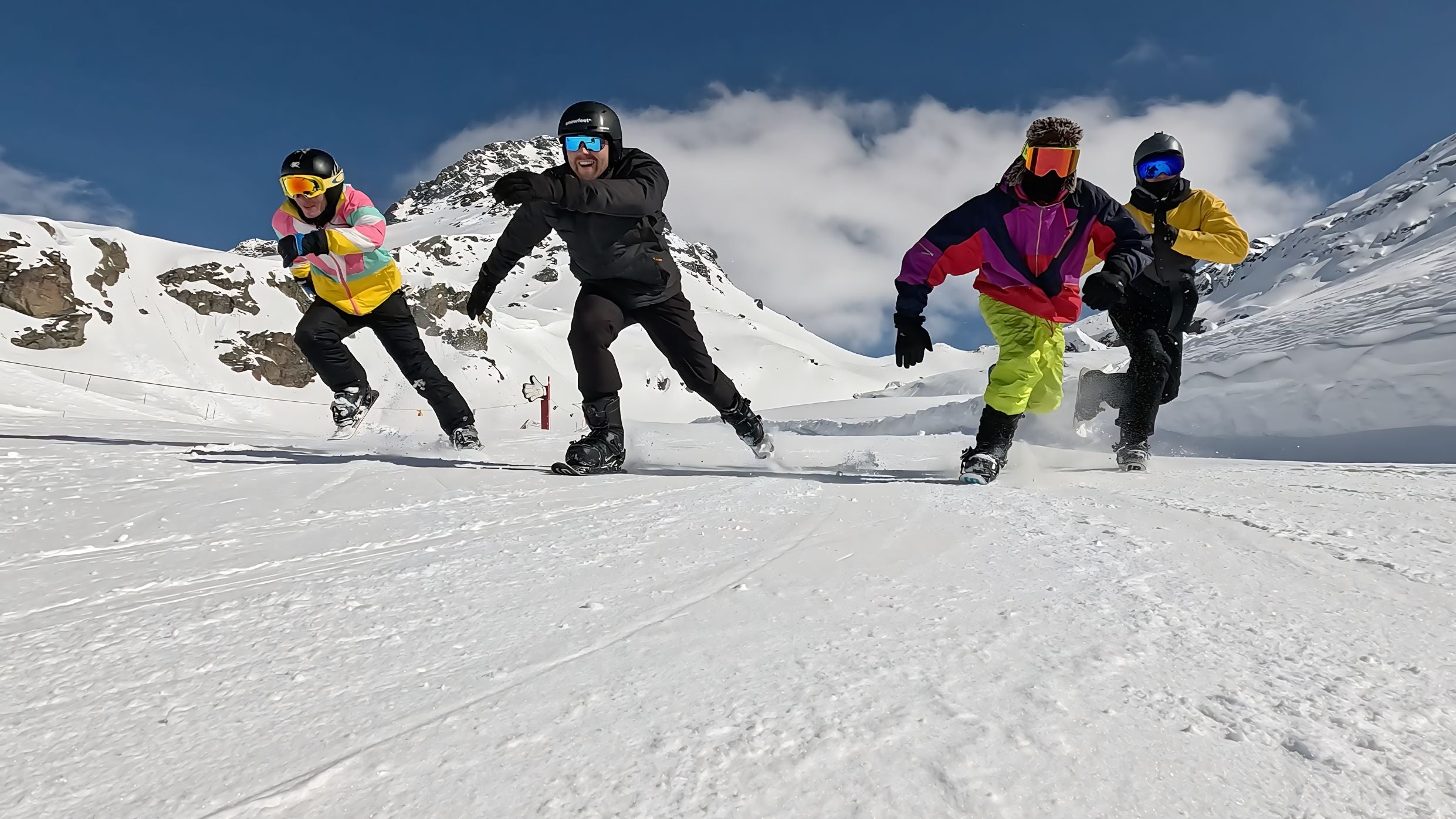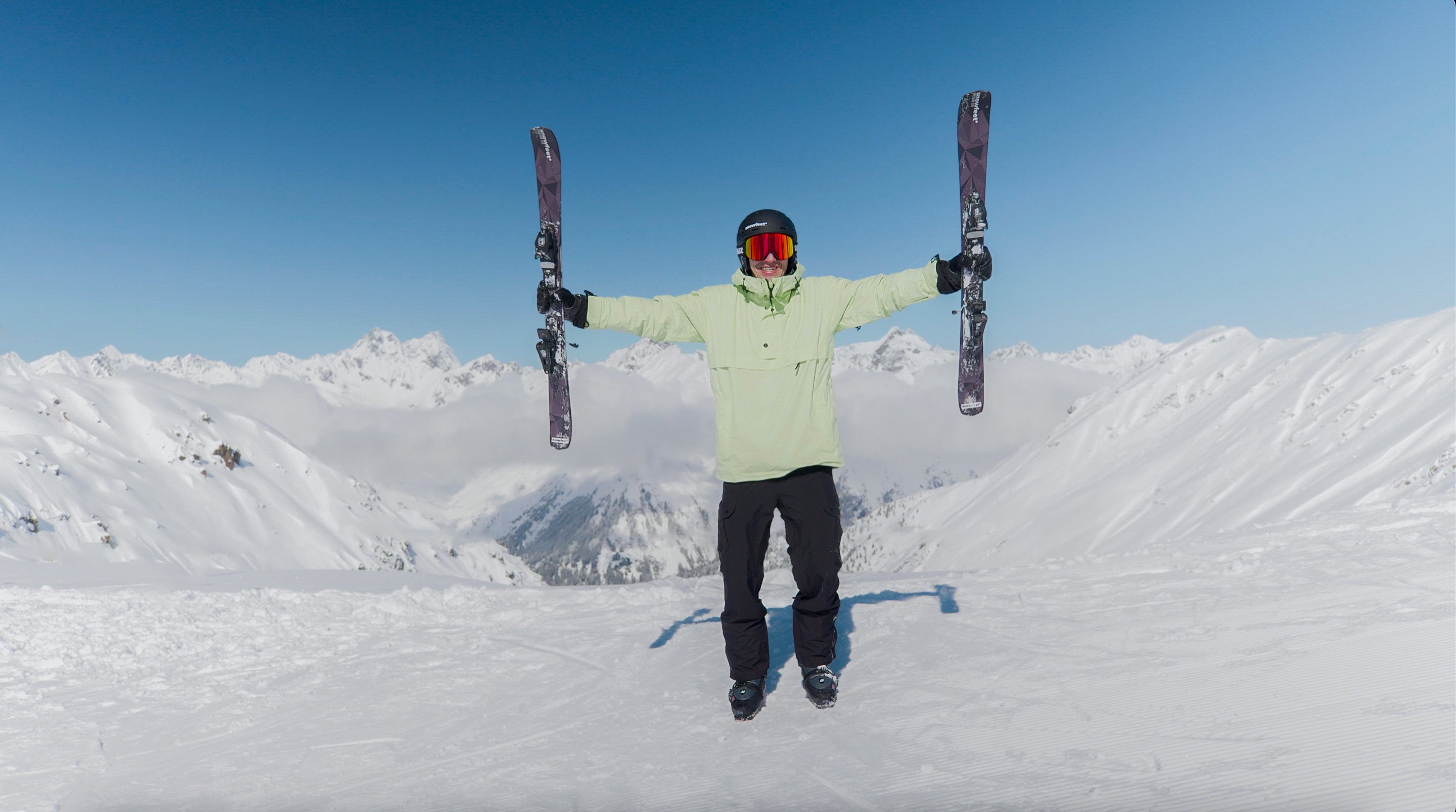Skiing for the first time can be both thrilling and intimidating. Between balancing, turning, and stopping, there’s a lot to learn, but choosing the right equipment can make all the difference. If you’re a beginner, you might have already heard of short skis or skiblades—an exciting and user-friendly option for anyone starting out.
What Are Skis for Beginners?
Skiing can be daunting for new riders, especially when faced with the traditional long skis that require precision and control. Beginner skis are designed to help ease this learning curve by focusing on stability, control, and easy maneuverability.
When looking for skis as a beginner, here are some key qualities to consider:
1. Shorter Length
Shorter skis are typically easier to manage because they give you more control. You can make tighter turns and stop more quickly, which is a big advantage for someone just starting to ski.
2. Wider Base
A wider base provides more stability, reducing the likelihood of falls, especially when turning or stopping. Wider skis are also more forgiving on uneven terrain, helping new skiers feel more secure.
3. Lightweight Design
Skis that are lighter are easier to maneuver, making it simpler for beginners to focus on balance and learning technique without struggling with heavy equipment.
4. Gentle Flex
A softer or gentler flex means the skis bend more easily, helping you make turns without needing too much pressure. This is particularly helpful for skiers who haven’t yet developed the strength or confidence to push hard into turns. Plus, skis with shorter flex compensate better for mistakes you might make than harder skis.
Why Are Short Skis Good for Beginners?
Short skis have become increasingly popular among skiers of all levels, but they’re especially helpful for beginners. Here’s why:
1. More Control
With short skis, you have more control over your movements. They’re less likely to catch an edge or wobble, which gives beginners more confidence to try different moves without worrying about falling or losing control.
2. Easier Turns
Turning on long skis can feel like steering a large truck, while short skis are more like zipping around in a small car. You can make quicker, sharper turns with less effort, which is great when you're still getting the hang of it.
3. Faster Learning Curve
Because short skis are easier to handle, they help beginners learn basic techniques—like stopping and turning—more quickly. You’ll spend less time frustrated by the equipment and more time enjoying the fun of skiing. Plus, you can progress in a faster pace and gain quickly confidence.
4. Lightweight and Compact
Short skis are lighter and more compact, which makes them easier to carry and transport. This is a nice bonus for beginners who might already be feeling overwhelmed by all the gear.
What Length of Skiblades Is Best for Beginners?
When it comes to skiblades, the length you choose plays a huge role in your skiing experience. Let’s take a closer look at three popular lengths: 65 cm, 99 cm, and 120 cm.
1. 65 cm Skiblades: Perfect for Skating on Snow
The 65 cm skiblades are the shortest option available, making them feel more like a mix of skiing and skating. If you’ve ever used rollerblades or ice skates, this size will feel very familiar to you. The short length gives you the ability to make extremely quick, sharp turns, almost as if you’re skating on snow.
Why It’s Great for Beginners:
Easy to Maneuver: The short length makes them super responsive, so you can change direction quickly and with little effort.
No Poles Needed: Many beginners love that they don’t need to use poles with these short skiblades, allowing for a simpler, more intuitive riding experience.
Perfect for Tricks: Once you’re more comfortable, the 65 cm skiblades also lend themselves well to trying out tricks and jumps, adding an extra element of fun.
2. 99 cm Skiblades: The All-Rounder
The 99 cm skiblades offer a fantastic balance between control and stability. These are ideal if you’re a beginner who wants to transition into more traditional skiing techniques while still enjoying the benefits of short skis.
Why It’s Great for Beginners:
More Stability: While still short, these skiblades offer more stability compared to the 65 cm ones, making them a great choice for those who want to build confidence on the slopes.
Carving Potential: These skiblades are perfect for learning to carve. With the extra length, you can practice more advanced skiing techniques while still enjoying the ease of control that short skis provide.
Versatile Terrain: Whether you're on groomed runs or tackling light powder, the 99 cm skiblades can handle a variety of conditions, making them a great all-rounder for beginners.
3. 120 cm Skiblades: A More Traditional Feel
At 120 cm, these skiblades start to feel more like traditional skis, but with all the benefits of a shorter length. If you’re ready to start exploring faster speeds and more varied terrain, the 120 cm skiblades offer more support and stability for that next step in your skiing journey.
Why It’s Great for Beginners:
More Speed, More Stability: With the extra length, these skiblades provide a more stable ride at higher speeds, giving beginners the opportunity to gradually progress to more challenging slopes.
A Bridge to Regular Skis: If your goal is to eventually switch to full-length skis, the 120 cm skiblades offer a great stepping stone. You’ll get used to the feel of longer skis without losing the ease of control that skiblades offer.
Tips for Beginners: How to Ride Skiblades
Once you've got your skiblades, the next step is learning how to ride them. Here are some essential tips to help you get started on the right foot:
1. Start on Gentle Slopes
Beginner skiers should always start on gentler slopes, such as green runs, to get a feel for how the skiblades move. Skiblades are highly maneuverable, but it’s best to practice on easier terrain first to build your confidence.
2. Push Off Like Skates
If you’ve ever skated on rollerblades or ice skates, you’ll find starting on skiblades pretty familiar. To get going, push off sideways with your legs like you would when skating. This is where the short length of skiblades really shines—they’re easy to push off and control from the start.
3. Master the Snowplow for Control
For beginners, mastering the snowplow (or “pizza”) technique is essential for controlling speed. To perform a snowplow, point the tips of your skiblades toward each other and apply pressure to the inside edges. This will help slow you down and make it easier to stop.
4. Practice Basic Turns
Turning on skiblades is straightforward, especially with their short length. To turn, simply shift your weight to the opposite leg: if you want to turn right, press down on your left leg; if you want to turn left, press down on your right leg. The responsiveness of skiblades makes turning feel natural and intuitive.
5. Balance Is Key
Always keep your weight centered over your skiblades. Leaning too far forward or backward can make you lose control, so focus on maintaining a steady, centered posture. This helps you stay balanced and makes it easier to react to changes in terrain. If you find poles helpful, grab a pair.
6. Use Your Edges
Skiblades are incredibly edge-friendly, meaning you can dig the edges into the snow to help control your movements. Practice using your edges to slow down, stop, or make sharper turns. The more you rely on your edges, the more control you'll have over your ride.
7. Try Small Jumps Once Comfortable
Once you’re feeling confident, try small jumps or hops. The shorter length of skiblades makes them ideal for practicing jumps and tricks without the bulk of traditional skis. Start small and build up as you get more comfortable on your blades.
Conclusion
Skiblades are an amazing choice for anyone looking to get into skiing without the steep learning curve of traditional skis. Their shorter length, maneuverability, and ease of use make them the perfect tool for beginners who want to focus on having fun and gaining confidence on the slopes. Follow the tips provided, stay patient, and enjoy the process of learning to ski with skiblades—you might just find that this is your new favorite way to ride!













Leave a comment
This site is protected by hCaptcha and the hCaptcha Privacy Policy and Terms of Service apply.